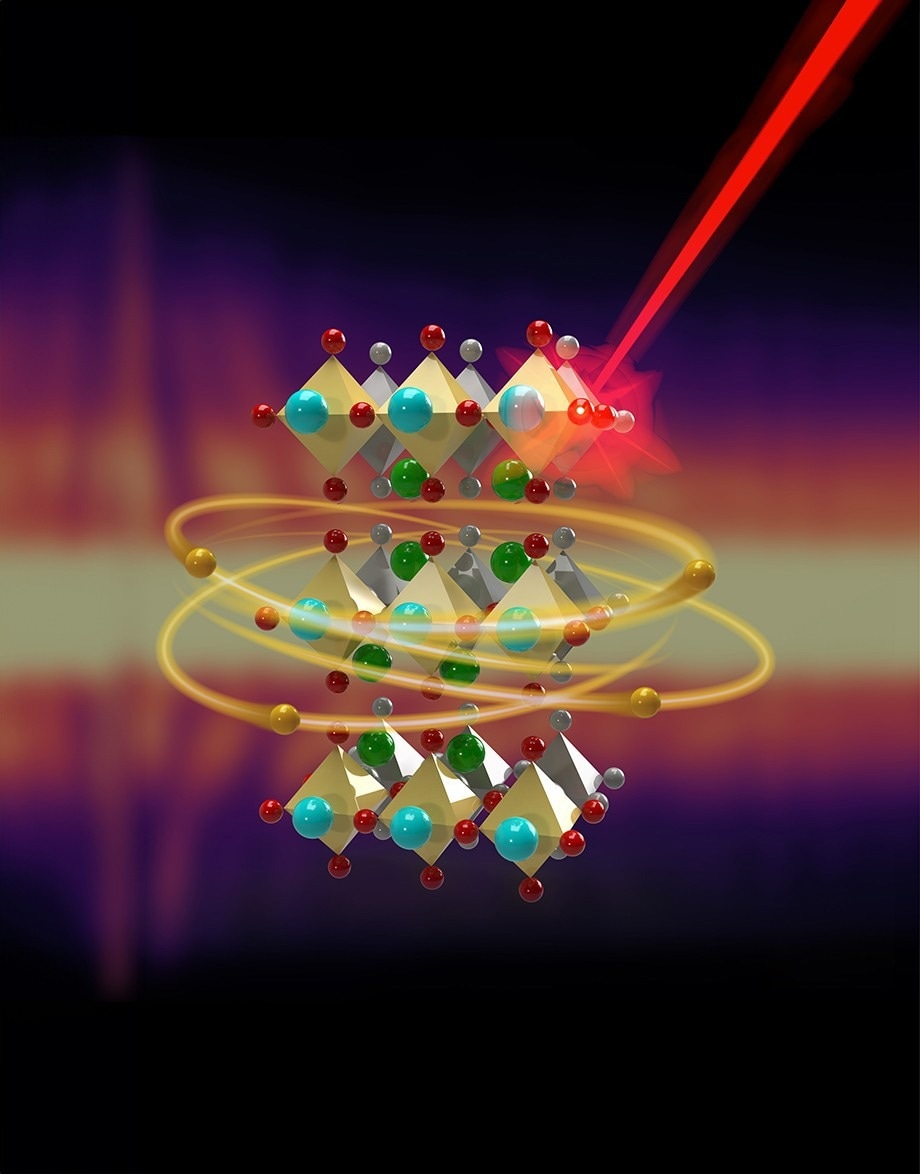Researchers at Cornell University identified an uncommon event in a metal-insulating material, offering vital insights for creating materials with novel features through rapid transition between states of matter.
 Depiction of the Mott insulator Ca2RuO4 quickly switching phases as it is excited with a laser beam. Image Credit: Cornell University
Depiction of the Mott insulator Ca2RuO4 quickly switching phases as it is excited with a laser beam. Image Credit: Cornell University
Mott insulators are a class of materials that have distinct electronic characteristics, including those that can be controlled by stimuli such as light. The genesis of the unusual features is not completely understood, in part owing to the difficult job of photographing the material's nanostructures in real time and documenting how these structures change phase in as little as a trillionth of a second.
A new study published on February 9th, 2023, in Nature Physics, unraveled the physics of the Mott insulator, Ca2RuO4, as it was stimulated with a laser. In unprecedented detail, researchers observed interactions between the material’s electrons and underlying lattice structure, using ultrafast X-Ray pulses to capture “snapshots” of structural changes in the Ca2RuO4 within critical picoseconds after excitation with the laser.
The experiment yielded unexpected results: while electronic rearrangements are often quicker than lattice ones, the opposite was seen.
Typically, the fast electrons respond to stimuli and drag the slower atoms with them. What we found in this work is unusual: The atoms responded faster than electrons.
Anita Verma, Postdoctoral Scholar, Cornell University
The atomic lattice moves so fast that scientists are unsure why, but one theory is that the material's nanotexture provides nucleation spots that help rearrange the lattice, much like supercooled ice forms most quickly near an impurity in water.
The study expands upon a 2023 paper by Andrej Singer, senior author and assistant professor of materials science and engineering, and colleagues that obtained a real-space visualization of the same material at the nanoscale through the use of powerful X-Rays, phase-retrieval algorithms, and machine learning.
Combining the two experiments gave us this insight that in some materials like this one, we can switch phases very fast – on the order of 100 times faster than in other materials that don’t have this texture. We are hopeful that this effect is a general pathway to speed up switching and result in some interesting applications down the road.
Andrej Singer, Assistant Professor, Cornell University
According to Singer, materials that are transparent when in their insulating state but rapidly turn opaque when stimulated into their metallic state can be developed using certain Mott insulators. In the future, quicker electronics could likewise be affected by the underlying physics.
Singer’s team intends to keep utilizing the same imaging methods to look into new phases of matter that arise when external stimuli stimulate nanotextured thin-films.
Kyle Shen, the James A. Weeks Professor of Physical Sciences in the College of Arts and Sciences; Darrell Schlom, the Tisch University Professor at Cornell Engineering; Nicole Benedek, associate professor of materials science and engineering; Hari Nair, assistant research professor of materials science and engineering; and researchers from the University of Ljubljana; University of California, San Diego; University of California, Santa Barbara; the Japan Synchrotron Radiation Research Institute; Pennsylvania State University; Argonne National Laboratory; and Columbia University are the study co-authors.
The US Department of Energy provided funding for the study.